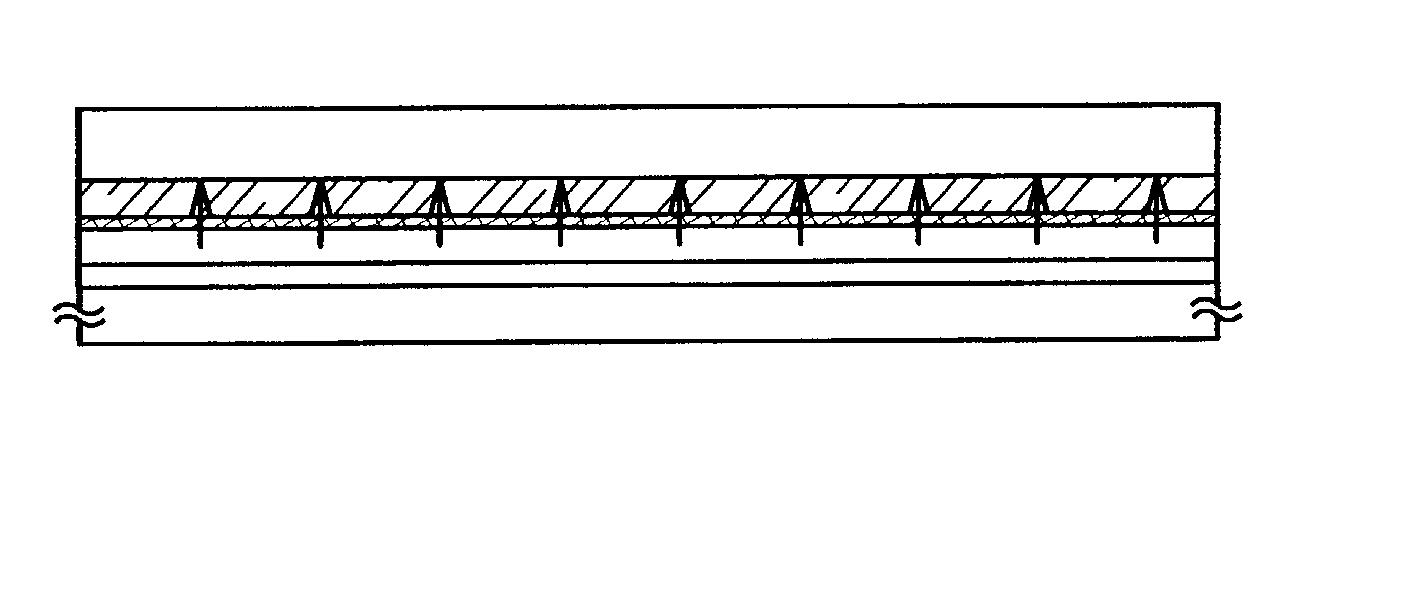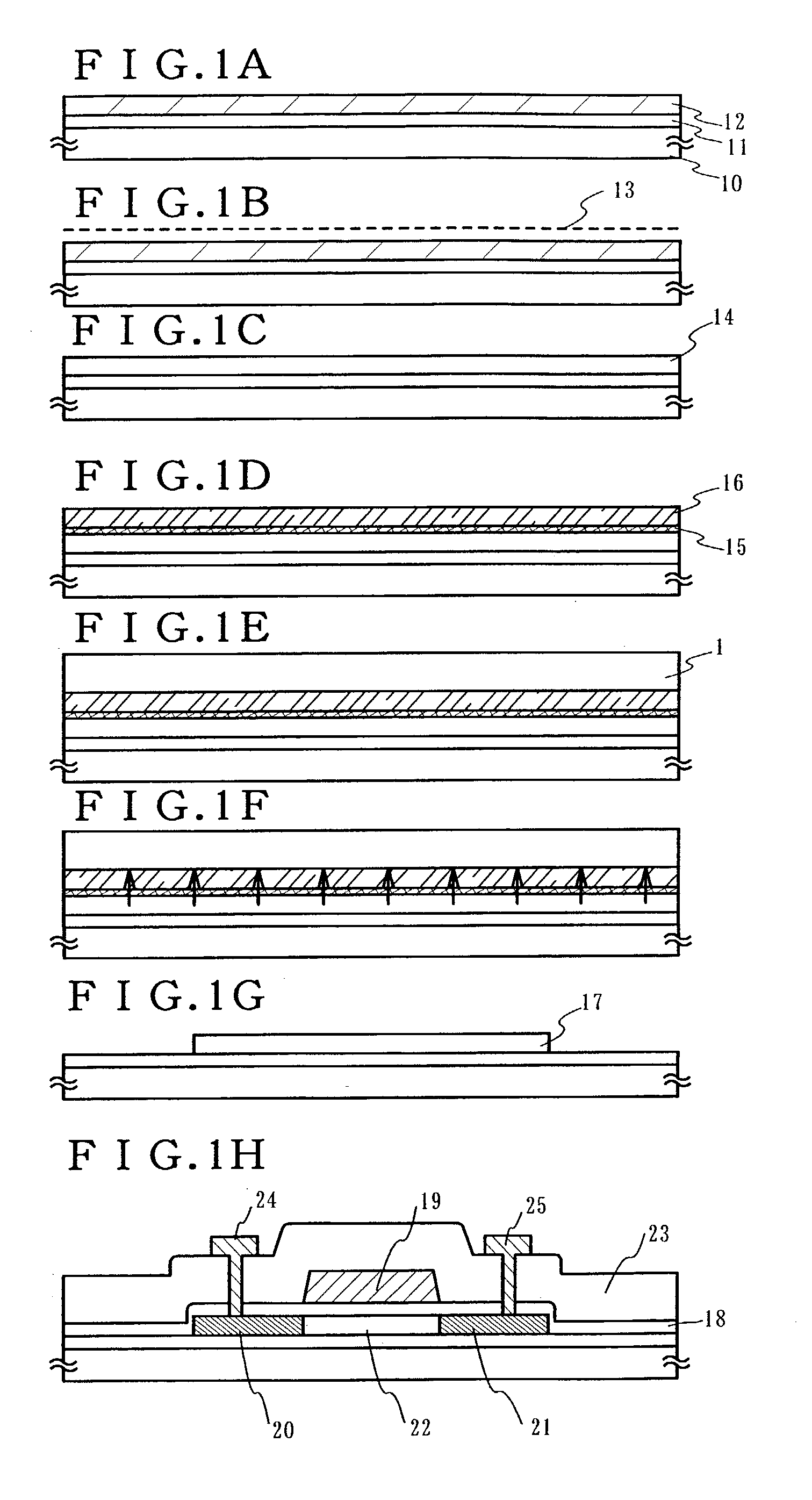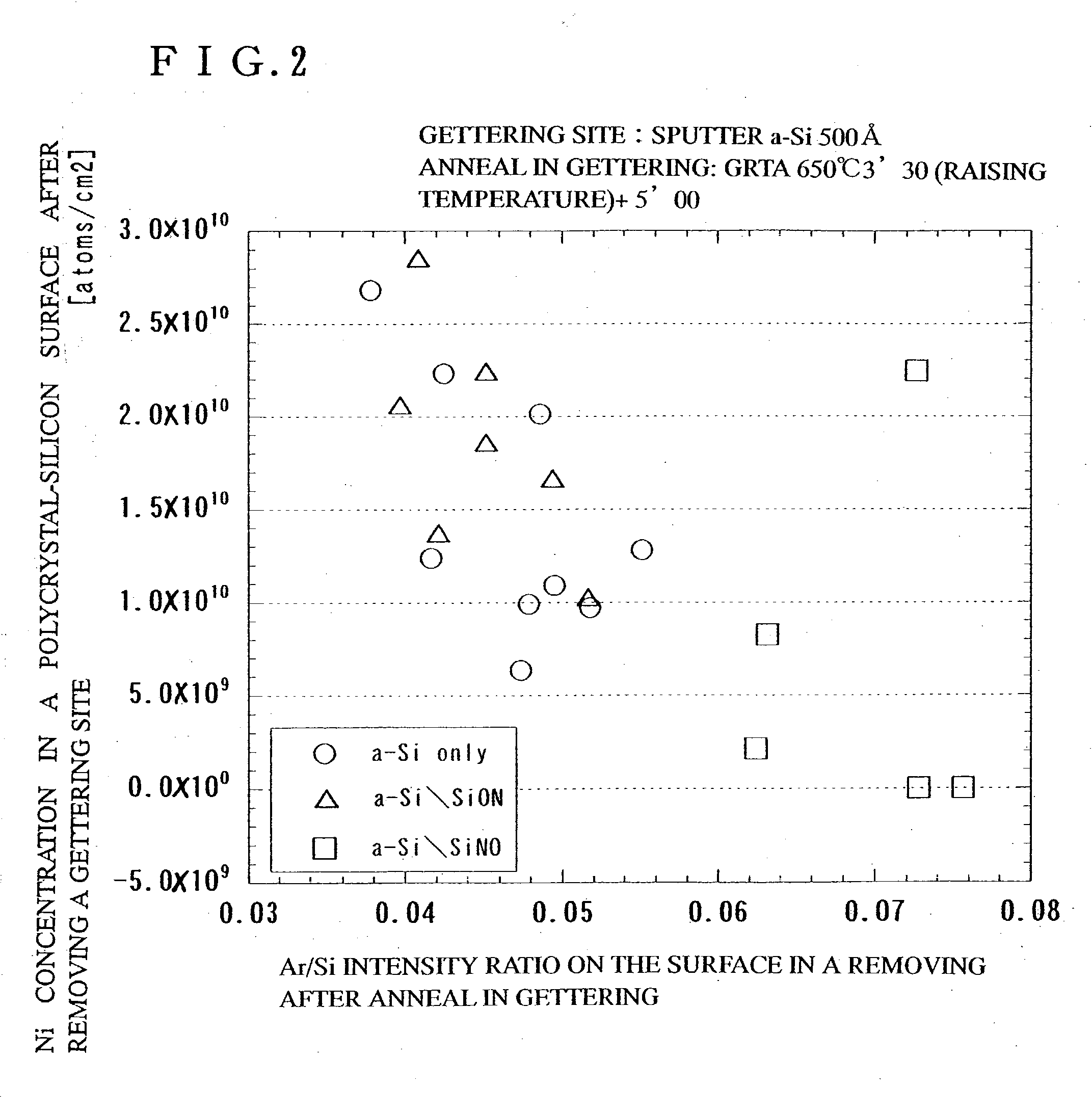Semiconductor device and a method for fabricating the device
- Summary
- Abstract
- Description
- Claims
- Application Information
AI Technical Summary
Benefits of technology
Problems solved by technology
Method used
Image
Examples
embodiment 1
[0100] Embodiment 1
[0101] Embodiments of the present invention will be described with reference to FIGS. 6A to 8. Here, description in detail will be given on a method of fabricating a pixel portion and TFTs (an n-channel TFT and a p-channel TFT) of a driving circuit provided in the periphery of the pixel portion on the same substrate at the same time.
[0102] First, a base insulating film 101 is formed on a substrate 100. After a first semiconductor film having a crystal structure is obtained, the film is etched into desired shapes to form semiconductor layers 102 to 106 that are separated from one another like islands.
[0103] A glass substrate (#1737) is used as the substrate 100, for the base insulating film 101, a silicon oxynitride film 101a with a thickness of 50 nm (preferably 10 to 200 nm) is formed by a plasma CVD method at 400.degree. C. using SiH.sub.4, NH.sub.3, and N.sub.2O as material gas. Next, a silicon oxynitride film 101b with a thickness of 100 nm (preferably 50 to 2...
embodiment 2
[0154] Embodiment 2
[0155] This embodiment describes a process of fabricating an active matrix liquid crystal display device from the active matrix substrate fabricated in Embodiment 1. The description is given with reference to FIG. 9.
[0156] After the active matrix substrate as illustrated in FIG. 8 is obtained in accordance with Embodiment 1, an oriented film is formed on the active matrix substrate of FIG. 8 and subjected to a rubbing treatment. In this embodiment, before the oriented film is formed, an organic resin film such as an acrylic resin film is patterned to form columnar spacers in desired positions in order to keep the substrates apart. The columnar spacers may be replaced by spherical spacers sprayed onto the entire surface of the substrate.
[0157] An opposite substrate is prepared next. The opposite substrate has a color filter in which colored layers and light-shielding layers are arranged with respect to the pixels. A light-shielding layer is also placed in the drivi...
embodiment 3
[0165] Embodiment 3
[0166] Embodiment 1 shows an example of a reflective display device in which a pixel electrode is formed from a reflective metal material. Shown with FIG. 10 in this embodiment is an example of transmissive display device in which a pixel electrode is formed from a light-transmitting conductive film.
[0167] The fabricate processes up through the step of forming an interlayer insulating film are identical with the processes of Embodiment 1, and the description thereof is omitted here. After the interlayer insulating film is formed in accordance with Embodiment 1, a pixel electrode 601 is formed from a light-transmitting conductive film. Examples of the light-transmitting conductive film include an ITO (indium tin oxide alloy) film, an indium oxide-zinc oxide alloy (In.sub.2O.sub.3--ZnO) film, a zinc oxide (ZnO) film, and the like.
[0168] Thereafter, contact holes are formed in an interlayer insulating film 600. A connection electrode 602 overlapping the pixel electro...
PUM
 Login to View More
Login to View More Abstract
Description
Claims
Application Information
 Login to View More
Login to View More - R&D
- Intellectual Property
- Life Sciences
- Materials
- Tech Scout
- Unparalleled Data Quality
- Higher Quality Content
- 60% Fewer Hallucinations
Browse by: Latest US Patents, China's latest patents, Technical Efficacy Thesaurus, Application Domain, Technology Topic, Popular Technical Reports.
© 2025 PatSnap. All rights reserved.Legal|Privacy policy|Modern Slavery Act Transparency Statement|Sitemap|About US| Contact US: help@patsnap.com



